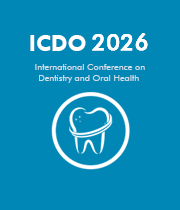Gum Disease
Gum Disease, also known as Periodontal Disease, is an infection of the structures that support the teeth. It is caused by a buildup of plaque, a sticky film of bacteria that forms on teeth. If not removed, the plaque hardens and turns into tartar, which is more difficult to remove. As the disease progresses, the gums become inflamed, and begin to separate from the teeth. This creates pockets of infection that can become filled with bacteria. Without treatment, the infection can spread to the bone, causing it to break down and the teeth to become loose. Gum Disease is very common, affecting up to 80% of adults in the United States. It is the leading cause of tooth loss in adults. Risk factors for the disease include smoking, diabetes, certain medications, and a lack of dental hygiene. It is important to brush and floss regularly, as well as to visit your dentist for regular check-ups. Early signs of the disease include gums that bleed easily, redness or swelling, and bad breath. If left untreated, the disease will cause the gums to recede, leaving the teeth exposed. In advanced stages, the teeth may need to be extracted. Treatment for Gum Disease depends on the stage of the disease. In the early stages, a deep cleaning can be used to remove plaque and tartar from the teeth and gums. Antibiotics may also be prescribed to help fight the infection. In more advanced cases, surgery may be necessary to remove the infection and repair the damage. No matter the stage of Gum Disease, it is important to seek treatment as soon as possible to prevent the condition from worsening. With proper care, the disease can be controlled and progression can be prevented.

David Geoffrey Gillam
Queen Mary University of London, United Kingdom
Christopher Turner
Spacemark Dental, United Kingdom




Title : Evaluating hygienist follow up for head and neck oncology patients in secondary care: Results from a two cycle audit
Peter Basta, Newcastle Dental Hospital, United Kingdom
Title : Atypical facial pain unravelled
Christopher Turner, Spacemark Dental, United Kingdom
Title : New treatment of temporomandibular disorder through muscle balance and muscle regeneration by activation of quiescent muscle stem cells( satellite cells) with mitochondrial dynamics
Ki Ji Lee, National Reserach Foundation & Busan Medical University, Korea, Republic of
Title : MRONJ and ORN: Referral or management in primary care? Navigating guidelines in the context of long waiting lists
Alisha Sagar, NHS England, United Kingdom
Title : Managing the unexpected: An Insight into supernumerary teeth
Bahar Gharooni Dowrani, Guy's and St Thomas' NHS Foundation Trust, United Kingdom
Title : Laxative prescribing for post operative head and neck cancer patients at Derriford Hospital
Pui Sze Kylie Li, Cardiff and Vale University Health Board, United Kingdom